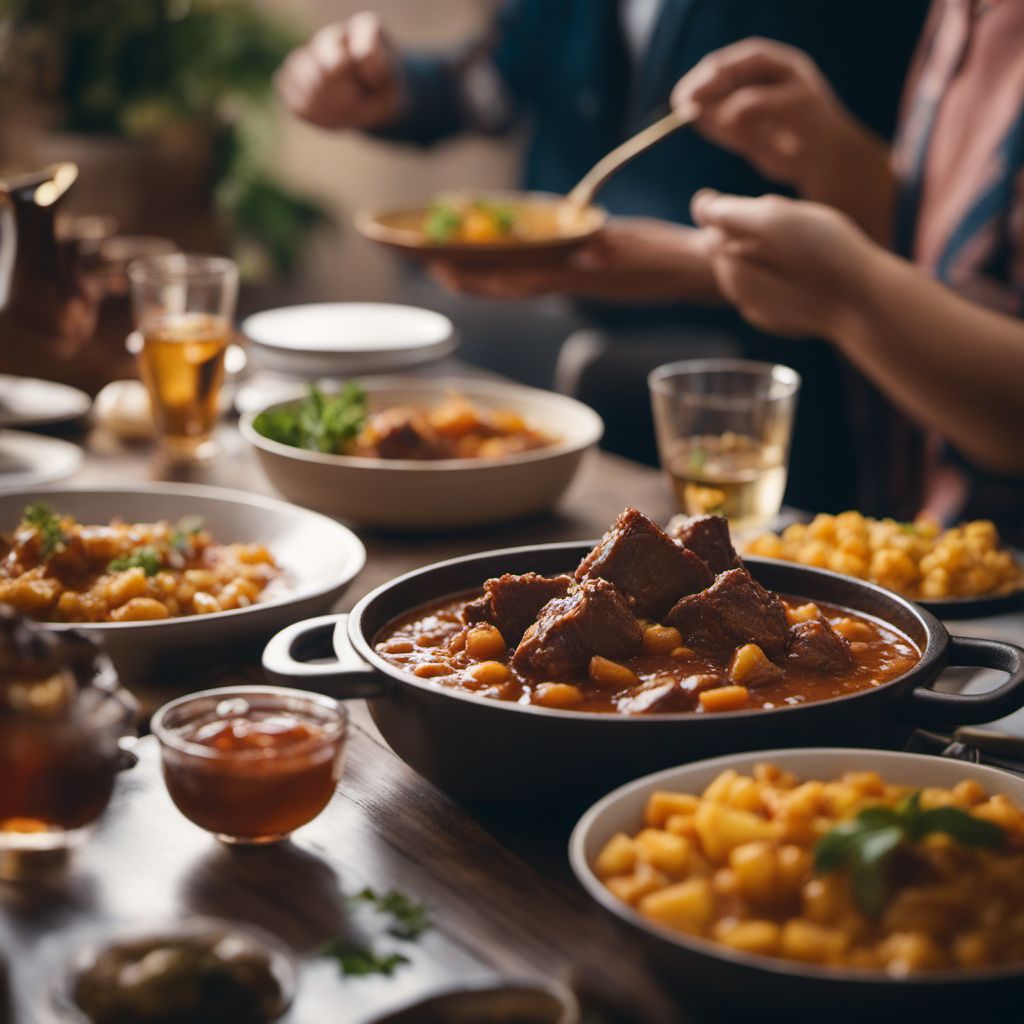
Dish
Caldereta de cordero
Spanish Lamb Stew
Caldereta de cordero is made with lamb, potatoes, onions, and peppers. The stew is seasoned with paprika, garlic, and bay leaves, and is typically served with a side of bread. This dish is high in protein and carbohydrates, making it a great meal for athletes and active individuals. It is also a good source of vitamins and minerals, including vitamin C and potassium.
Origins and history
Caldereta de cordero is believed to have originated in the region of Castilla y León in Spain. It was traditionally made by shepherds who would use lamb that was pastured in the mountains. The dish was named after the caldera, a type of pot that was used to cook the stew.
Dietary considerations
This dish is not suitable for vegetarians or vegans, as it contains meat. It is also not recommended for individuals with high blood pressure or heart disease, as it is high in sodium.
Variations
There are many variations of Caldereta de cordero, with some recipes calling for the addition of tomatoes or olives. Some versions also use beef or pork instead of lamb.
Presentation and garnishing
Caldereta de cordero is typically served in a large bowl, with the meat and vegetables arranged in an attractive manner. The stew is often garnished with fresh herbs, such as parsley or thyme.
Tips & Tricks
To make Caldereta de cordero, it is important to use high-quality lamb and fresh vegetables. The stew should be cooked slowly over low heat to allow the flavors to meld together. Leftovers can be stored in the refrigerator for up to three days.
Side-dishes
Caldereta de cordero is typically served with a side of bread or potatoes.
Drink pairings
Caldereta de cordero pairs well with a variety of wines, including reds and whites. It also goes well with beer, such as a light lager or pilsner.
Delicious Caldereta de cordero recipes
More dishes from this category... Browse all »

Aab gosht
Indian cuisine
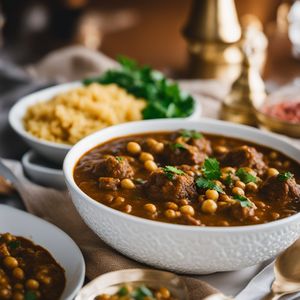
Abgoosht
Iranian cuisine

Adobo
Filipino cuisine
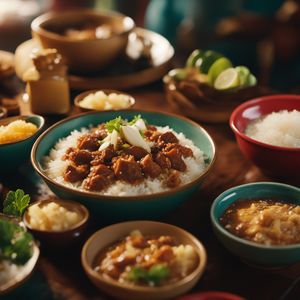
Adobo sa gatâ
Filipino cuisine

Adobong baboy
Filipino cuisine

Adobong baka
Filipino cuisine

Adobong dilaw
Filipino cuisine

Adobong hito
Filipino cuisine
More cuisines from this region... Browse all »
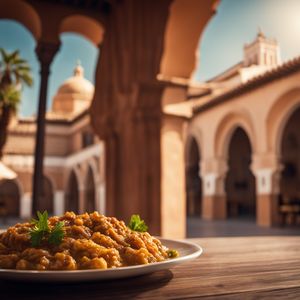
Andalusian cuisine
Bold, Spicy, Savory, Tangy, Sweet

Aragonese cuisine
Hearty, Rustic, Savory, Earthy, Aromatic

Asturian cuisine
Hearty, Savory, Flavorful, Smoky, Tangy
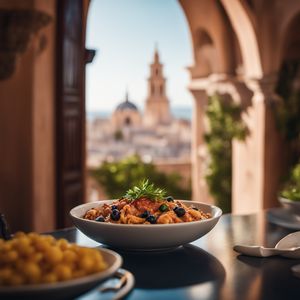
Balearic cuisine
Fresh, Light, Savory, Aromatic
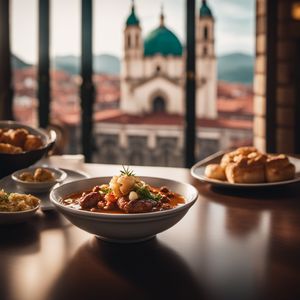
Basque cuisine
Bold, Savory, Spicy, Aromatic
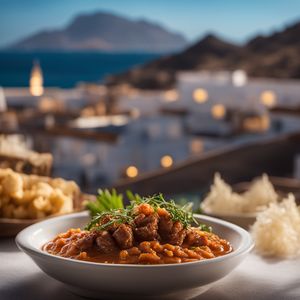
Canarian cuisine
Fresh, Light, Savory, Aromatic

Cantabrian cuisine
Salty, Briny, Fresh, Earthy, Smoky
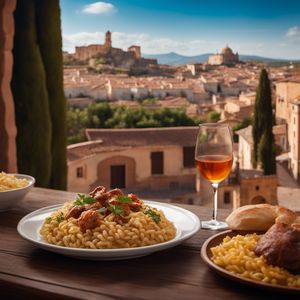
Castilian-Leonese cuisine
Hearty, Savory, Smoky, Spicy

